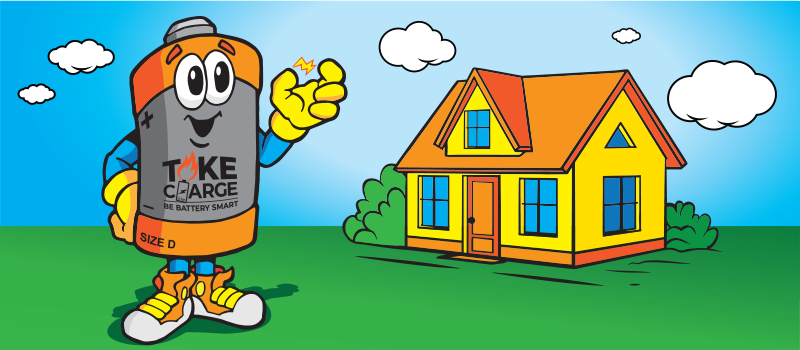All batteries – both single-use and rechargeable – can be dangerous to your health and home if the manufacturer’s instructions are not followed.
The recommendations below, however, focus on rechargeable batteries. Follow these steps to help reduce the risks associated with batteries. Additional safety information for lithium-ion batteries is available here as well as button or coin batteries here.
Installation
- Purchase batteries and devices that have been certified by UL or another independent safety testing agency.
- Install properly. If you don't, the battery can overheat.
- Don’t let children install batteries.
- Don’t mix old batteries with new or rechargeable batteries with non-rechargeable.
Use
- Stop using a device if the battery shows signs of damage (e.g., unusual odor, change in color, leaking, hissing, cracking, popping sounds).
- Don’t let children take battery powered devices to bed. Burns and other injuries may occur if the battery leaks or overheats.
- Check children’s devices to ensure batteries are installed correctly.
Storage
- Keep batteries stored in a dry location at room temperature and away from heat, anything flammable, and direct sunlight.
- Keep batteries out of sight and reach of children.
- Remove and safely store batteries from devices that you won't use for a long time (e.g., seasonal decorations, old toys).
- Store expired batteries in a non-metal container until they can be recycled.
- Tape the terminals of expired batteries or place each battery in a plastic bag until it can be recycled. Terminals that rub against each other could cause a spark.
Charging
- Always use the charger the device came with or one recommended by the manufacturer.
- Always plug directly into a wall electrical outlet.
- Place the device or battery charger on a non-flammable surface during charging.
- Stay away from flammables (e.g., pillows, blankets, sheets, clothing, sofas, curtains).
- Charge your device at room temperature where you can see it, but not near the primary exit of a room. Left unattended, a device with a defective battery could overheat and catch fire. A smoke alarm is an excellent safety tool.
- Do not continue to charge the battery once it is fully charged.
In case of fire
- If a battery fire occurs, go outside, call 9-1-1, and stay outside.
- “Fire Safe SC: A Community Risk Reduction Program” provides additional information.
End-of-life battery management
- Remove rechargeable batteries before recycling or disposing of a device.
- Do not place batteries in your household trash or recycling container.
- Recycle properly. To learn how and where, visit RecycleHereSC.
